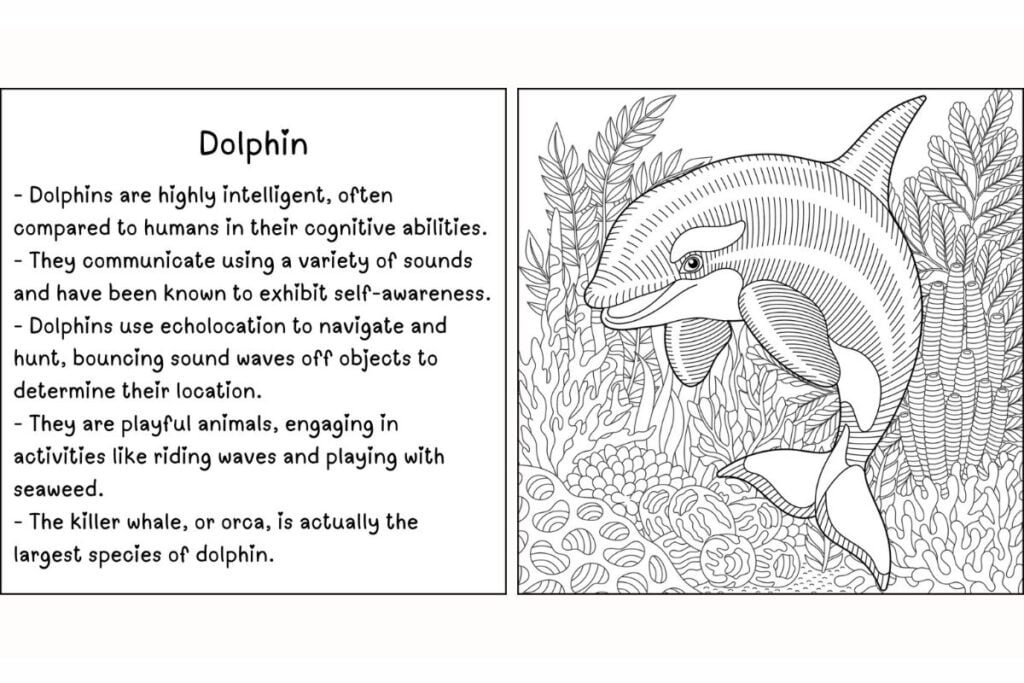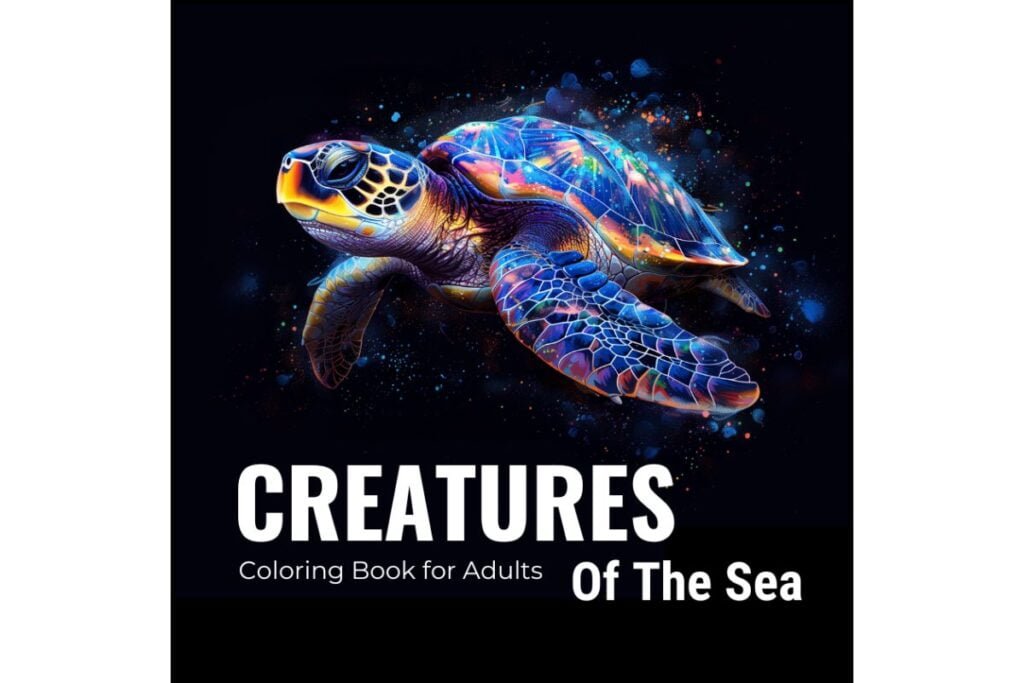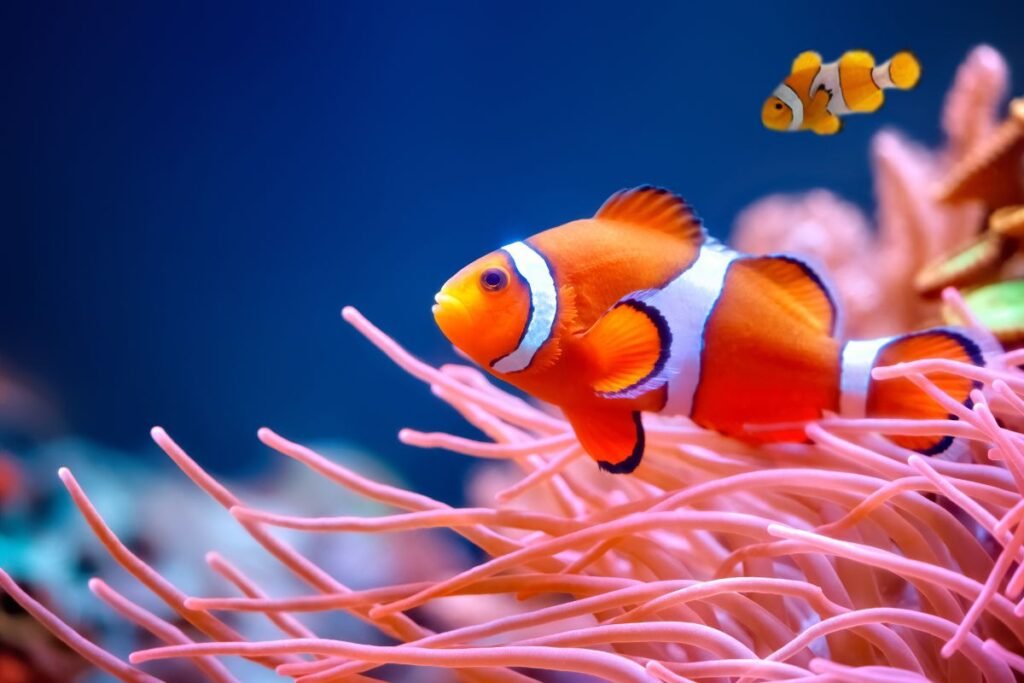In the vast expanse of our planet’s oceans, a mesmerizing array of sea creatures thrives, each playing a crucial role in the intricate web of marine ecosystems.
From the microscopic plankton that forms the foundation of oceanic food chains to the majestic blue whales that roam the open seas, we embark on a journey to uncover these remarkable beings’ diversity, adaptations, and significance.
The Diversity of Marine Life
The oceans are home to an astounding variety of life forms, with new species being discovered regularly. Marine biodiversity spans from the shallowest tide pools to the deepest trenches, encompassing creatures of all shapes, sizes, and colors.
Invertebrates: The Backbone-less Wonders
Invertebrates constitute a significant portion of marine life. These creatures, lacking a vertebral column, display an incredible range of forms and functions:
1. Cnidarians: Including jellyfish, corals, and sea anemones, these animals possess specialized stinging cells called nematocysts.
2. Mollusks: From the intelligent octopus to the armored nautilus, mollusks exhibit diverse body plans and behaviors.
3. Arthropods: Crustaceans like crabs, lobsters, and shrimp dominate this group, with their jointed appendages and hard exoskeletons.
4. Echinoderms: Starfish, sea urchins, and sea cucumbers belong to this unique phylum, characterized by radial symmetry and a water vascular system.
Vertebrates: The Ocean’s Backboned Inhabitants
Marine vertebrates, though fewer in number, play crucial roles in oceanic ecosystems:
1. Fish: From the tiny gobies to the enormous sunfish, fish display a wide array of adaptations for life in the water.
2. Marine Mammals: Whales, dolphins, seals, and sea lions have evolved from terrestrial ancestors to become fully adapted to aquatic life.
3. Marine Reptiles: Sea turtles, marine iguanas, and sea snakes represent the reptilian inhabitants of the oceans.
4. Seabirds: Although not strictly aquatic, many bird species like penguins, albatrosses, and frigatebirds depend heavily on the ocean for survival.

Adaptations for Life in the Blue Oceans
The marine environment presents unique challenges that have shaped the evolution of sea creatures over millions of years. We observe fascinating adaptations that allow these organisms to thrive in their watery habitats:
Respiration
Aquatic organisms have developed various methods to extract oxygen from water:
– Gills: Most fish and many invertebrates use these specialized organs to absorb dissolved oxygen.
– Skin Breathing: Some marine animals, like sea cucumbers, can absorb oxygen directly through their skin.
– Air Breathing: Marine mammals and reptiles have retained lungs, requiring them to surface periodically for air.
Locomotion
Moving through water requires different strategies than those used on land:
– Fins and Flippers: These appendages provide propulsion and steering for many marine vertebrates.
– Jet Propulsion: Squids and octopuses expel water forcefully to move rapidly.
– Undulation: Many fish and marine mammals use whole-body movements to swim efficiently.
Buoyancy Control
Maintaining position in the water column is crucial for many sea creatures:
– Swim Bladders: Many bony fish use these gas-filled organs to adjust their buoyancy.
– Oil and Wax: Some deep-sea creatures use lightweight organic compounds to maintain neutral buoyancy.
– Dynamic Lift: Sharks must swim constantly to generate lift from their pectoral fins.
The Importance of Sea Creatures in Ecosystems
Marine organisms play vital roles in maintaining the health and balance of ocean ecosystems:
Nutrient Cycling
Sea creatures contribute significantly to the movement of nutrients within marine environments:
– Phytoplankton: These microscopic plants form the base of many marine food webs and are responsible for a large portion of the Earth’s oxygen production.
– Filter Feeders: Animals like whales, mussels, and sponges help to clean the water and redistribute nutrients.
– Decomposers: Bacteria and other microorganisms break down dead organic matter, recycling nutrients back into the ecosystem.

Habitat Formation
Some marine species create habitats that support entire communities.
– Coral Reefs: These diverse ecosystems are built by tiny coral polyps and provide shelter for countless species.
– Kelp Forests: Large seaweeds form underwater forests that serve as nurseries and hunting grounds for many marine animals.
Ecological Balance
The complex interactions between sea creatures help maintain ecosystem stability:
– Predator-Prey Relationships: Top predators like sharks help control populations of other species, preventing overgrazing of vital habitats.
– Symbiotic Relationships: Many sea creatures form mutually beneficial partnerships, such as clownfish and sea anemones.
Threats to Marine Life
Despite their remarkable adaptations, sea creatures face numerous challenges in today’s changing world:
Climate Change
Rising ocean temperatures and acidification pose significant threats:
– Coral Bleaching: Warmer waters cause corals to expel their symbiotic algae, leading to widespread death of reef ecosystems.
– Altered Migration Patterns: Changing ocean currents and temperatures disrupt the movements of many marine species.
Pollution
Human activities introduce harmful substances into marine environments:
– Plastic Pollution: Microplastics and larger debris pose ingestion and entanglement risks for many sea creatures.
– Chemical Runoff: Agricultural and industrial pollutants can lead to toxic algal blooms and dead zones in coastal areas.
Overfishing
Unsustainable fishing practices threaten many marine species:
– Population Collapse: Some fish stocks have been reduced to critically low levels due to overharvesting.
– Bycatch: Non-target species are often unintentionally caught and killed in fishing operations.

Conservation Efforts
To protect the rich biodiversity of our oceans, numerous conservation initiatives are underway:
Marine Protected Areas
Establishing areas of limited human activity helps preserve critical habitats and allows populations to recover:
– No-Take Zones: These areas prohibit all extractive activities, allowing marine ecosystems to thrive undisturbed.
– Sustainable Use Areas: Carefully managed zones permit limited human activities while still protecting marine resources.
Sustainable Fishing Practices
Implementing responsible fishing methods helps maintain healthy fish populations:
– Catch Limits: Science-based quotas ensure that fish stocks are not depleted beyond their ability to recover.
– Gear Modifications: Improved fishing equipment reduces bycatch and habitat damage.
Public Education and Engagement
Raising awareness about marine conservation is crucial for long-term success:
– Citizen Science: Programs that involve the public in data collection and monitoring help track the health of marine ecosystems.
– Eco-Tourism: Responsible wildlife viewing experiences can foster appreciation for marine life and support conservation efforts.
As we conclude our exploration of sea creatures, we are reminded of the incredible diversity and vital importance of marine life.
By understanding these remarkable organisms and the challenges they face, we can work towards a future where the oceans continue to teem with life, supporting both human well-being and the health of our planet. The fate of sea creatures is inextricably linked to our own, making their conservation a moral imperative and a necessity for the sustainability of life on Earth.


